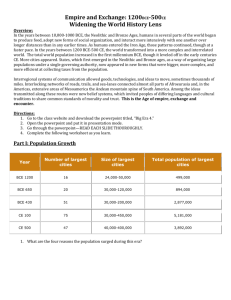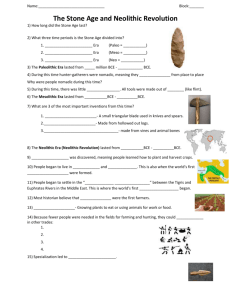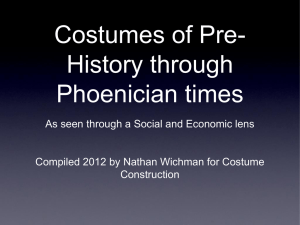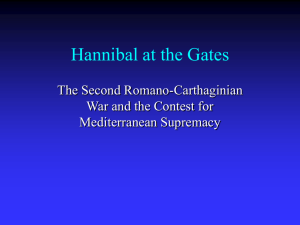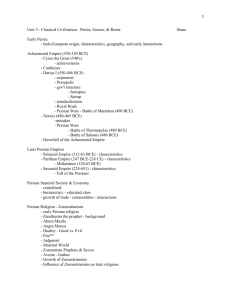Using Timelines
advertisement
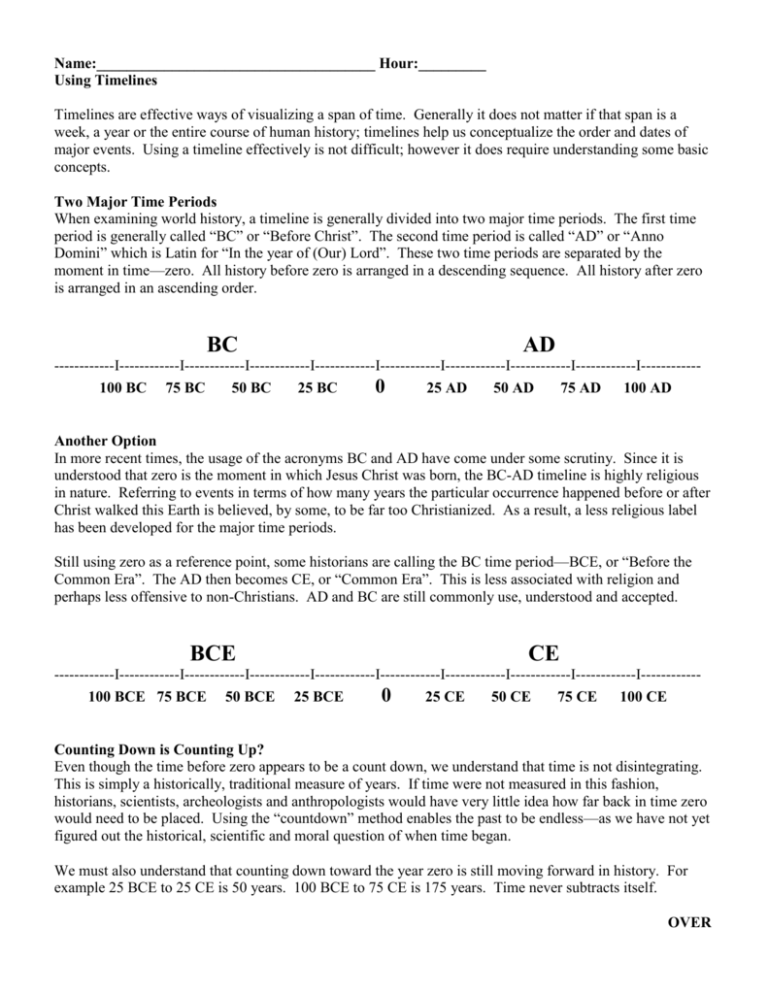
Name:_____________________________________ Hour:_________ Using Timelines Timelines are effective ways of visualizing a span of time. Generally it does not matter if that span is a week, a year or the entire course of human history; timelines help us conceptualize the order and dates of major events. Using a timeline effectively is not difficult; however it does require understanding some basic concepts. Two Major Time Periods When examining world history, a timeline is generally divided into two major time periods. The first time period is generally called “BC” or “Before Christ”. The second time period is called “AD” or “Anno Domini” which is Latin for “In the year of (Our) Lord”. These two time periods are separated by the moment in time—zero. All history before zero is arranged in a descending sequence. All history after zero is arranged in an ascending order. BC AD ------------I------------I------------I------------I------------I------------I------------I------------I------------I-----------100 BC 75 BC 50 BC 25 BC 0 25 AD 50 AD 75 AD 100 AD Another Option In more recent times, the usage of the acronyms BC and AD have come under some scrutiny. Since it is understood that zero is the moment in which Jesus Christ was born, the BC-AD timeline is highly religious in nature. Referring to events in terms of how many years the particular occurrence happened before or after Christ walked this Earth is believed, by some, to be far too Christianized. As a result, a less religious label has been developed for the major time periods. Still using zero as a reference point, some historians are calling the BC time period—BCE, or “Before the Common Era”. The AD then becomes CE, or “Common Era”. This is less associated with religion and perhaps less offensive to non-Christians. AD and BC are still commonly use, understood and accepted. BCE CE ------------I------------I------------I------------I------------I------------I------------I------------I------------I-----------100 BCE 75 BCE 50 BCE 25 BCE 0 25 CE 50 CE 75 CE 100 CE Counting Down is Counting Up? Even though the time before zero appears to be a count down, we understand that time is not disintegrating. This is simply a historically, traditional measure of years. If time were not measured in this fashion, historians, scientists, archeologists and anthropologists would have very little idea how far back in time zero would need to be placed. Using the “countdown” method enables the past to be endless—as we have not yet figured out the historical, scientific and moral question of when time began. We must also understand that counting down toward the year zero is still moving forward in history. For example 25 BCE to 25 CE is 50 years. 100 BCE to 75 CE is 175 years. Time never subtracts itself. OVER Answer the following questions: 1. What does BC stand for? 2. What does AD stand for in Latin? In English? 3. What does BCE stand for? 4. What does CE stand for? 5. Why do some people prefer using BCE and CE over BC and AD? Use the timeline below to answer the following questions. BCE CE I------------I------------I------------I------------I------------I------------I------------I------------I-----------500 250 0 250 500 509 Roman Republic Founded 146 Fall of the Greek Empire 44 Caesar killed 80 Colosseum completed 476 Fall of the Roman Empire 6. Did Greek power end in the Common Era or Before the Common Era? 9. Julius Caesar was killed how many years before the Colosseum was completed? 7. Which Empire fell first, the Greek or the Roman? 10. How long did the Colosseum serve the Roman Empire? 8. How many years after the Roman Republic was founded did the Greek Empire fall?
